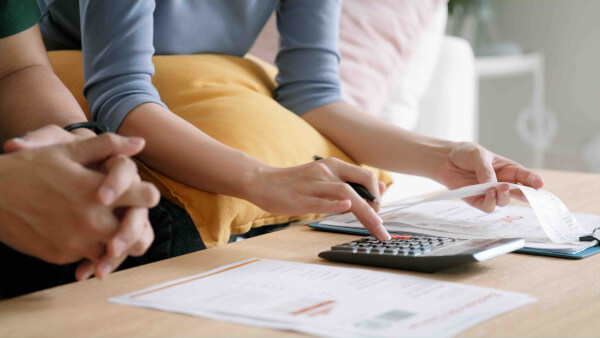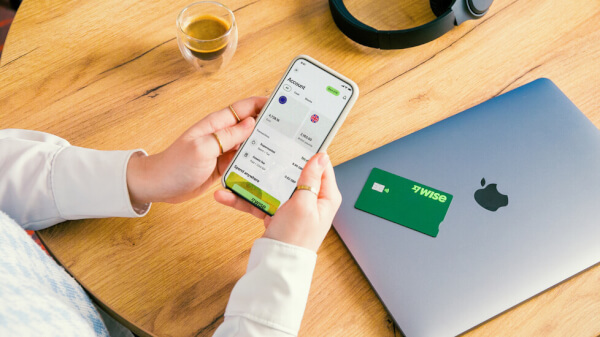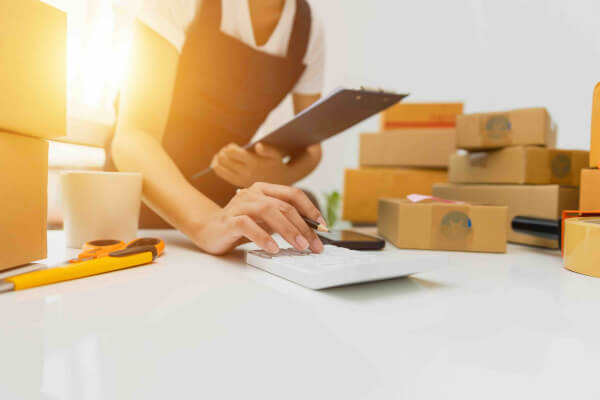Navigating Cross-Border Payments Amid Tariff Uncertainty
Over the past month, businesses around the world have been preparing for a new reality in global trade. As uncertainty grows surrounding tariff regulation...

If you’re still filing your VAT Returns to HM Revenue and Customs (HMRC) through the post, we’ve got news for you. With Making Tax Digital (MTD) for VAT coming into effect on 1st April 2022 in the UK, you’ll need to start looking for MTD-compatible software to successfully send your VAT Returns to HMRC with ease.
In this guide, we’ll be breaking down everything you need to know about MTD for VAT, from what exactly it is and when it comes into effect, to how to register for MTD for VAT and the business records you’ll need to hang on to.
Need to submit and pay your VAT return? With Wise Business you can pay HMRC from anywhere in the world without stepping foot into a bank.
Learn more about Wise Business
 |
|
As part of a government initiative to make filing tax returns easier for taxpayers, Making Tax Digital for VAT requires all VAT-registered businesses to keep digital records and file their VAT returns using MTD-compatible software.
Commenting on the introduction to MTD for VAT, co-founder and COO Daniel Hogan of Ember, an MTD-compatible fully automated accounting and tax app, says “With HMRCs ambition to deliver a fully digital tax system that works closer to real time, MTD for VAT creates a great opportunity for business owners to invest in cloud-based software to ensure they are completely ready for the changes to come down the line.
“Although some see it as a further compliance burden, we see it as the time to improve the efficiency and accuracy of your bookkeeping that will in turn empower businesses to act on more timely information – always knowing how much they owe the taxman at the end of the day.”
| 📝 Read more: |
|---|
Since 2019, MTD for VAT has been compulsory for all VAT-registered businesses earning above the VAT threshold of £85,000. However, as of 1st April 2022, all VAT-registered businesses, regardless of turnover, will need to apply (although there are a few exceptions, which we’ll cover below).

As mentioned above, all VAT-registered businesses will need to register for MTD for VAT, irrespective of their annual taxable turnover. This is applicable to any VAT-registered business, including limited companies, sole traders and partnerships, as well as businesses who have registered for MTD for VAT voluntarily.
If you’ve already voluntarily registered your business for VAT but want to avoid MTD for VAT, you’re in luck. Any VAT-registered business with taxable sales less than the registration threshold — £85,000 — can cancel their VAT registration with HMRC.
This is what’s known as a voluntary VAT registration cancellation and can be done online, or if you can fill in and post a VAT7 form to HMRC, if you’d prefer.
Keep in mind that it can take up to 3 weeks for your cancellation to be confirmed, so be sure to continue observing VAT requirements up until HMRC officially confirms your business as no longer VAT-registered.
You’ll also need to submit a final VAT Return for the period up to the cancellation date, accounting for stocks and assets that you could reclaim VAT for when you purchased, and if the total VAT owed is above £1,000.
If you are making a taxable turnover above the VAT threshold, there are a few exceptional circumstances where you won’t have to register for VAT.
Your business is automatically exempt from VAT if:
However, if none of the above are applicable to you, you can apply for exemption if, in the eyes of HMRC, it is “not reasonable or practical for you to use computers, software or the internet to follow the rules for Making Tax Digital for VAT.”
This could be due to any of the following reasons:
If you want to apply for an exemption to MTD for VAT, you’ll need to call or write to HMRC equipped with the following information:
HMRC will consider each application for exemption on a case-by-case basis, and will send you a letter with their final verdict. Until then, keep filing your VAT Returns the way you normally do.

To get started with the registration process, you’ll need the following information:
Depending on the nature of your business, you’ll also need:
| 💡 Read more: Partnership bank accounts. |
|---|
After you’ve signed up you’ll receive a confirmation email from noreply@tax.service.gov.uk within 3 working days — just be sure to check your ‘Spam’ folder in case it falls in there.
If you already pay by Direct Debit, take caution — if you sign up too close to the date your return is due, you might end up paying twice.
To make sure this doesn’t happen, don’t sign up less than:
If you don’t already pay by Direct Debit, make sure you sign up at least 3 days before your return is due.
Failure to comply with the latest laws could see you facing fines from HMRC. From January 2023, HMRC is moving to a points-based system to ensure that only those who regularly miss deadlines and make mistakes are penalised, as opposed to businesses who only slip up occasionally.
Here’s how it works: every time a submission or deadline is missed, HMRC will attribute a ‘point’ to you, notifying you of every point you receive. After a certain number of points — which we’ll outline in the table below — you’ll be fined £200 for every submission you fail to make.
The ‘penalty threshold’ that determines the total number of points you’ll have to get before you’re fined by HMRC is based on how often you’re required to make a submission.
Source: HMRC

Since a big part of MTD for VAT is storing digital records, you’ll need to keep ahold of the following documents:
You’ll also need to keep digital copies of documents covering multiple transactions made on behalf of your business by:
While you’ll need to store these transactions digitally, you don’t need to worry about scanning paper records, such as invoices or receipts.
Before you settle on a software, double check that it’s compatible with HMRC’s online systems.
If you’re using more than one software package to keep your VAT records and submit your VAT returns, you’ll need to link them in one of the following ways:
Alternatively, you could save yourself the hassle by signing up to MTD-ready software such as Ember. In doing so, business owners can benefit from real-time insights into the amount of tax owed to HMRC at any point, as a result gaining a deeper understanding of their cash flow.
Dan explains that having MTD-ready software won’t just prove beneficial for business owners adopting it from VAT:
“The next big shift that business owners and individuals will have to start thinking about is MTD for Income Tax. This is set to have a monumental impact on an estimated 4.3 million taxpayers who will be affected by these changes, 75% of whom are not currently using any software to help them file their Self Assessment.
“Although it will be slightly more onerous, using MTD-approved software designed specifically for the business owner and not the accountant will have the benefit of ensuring you’re never caught off guard or short of cash when the taxman comes knocking.”
Pay your VAT bill easily and affordably with Wise Business
Getting all the documents and data prepared for your VAT return is one of the most time-consuming tasks for small business owners. Thankfully, there are a range of Making Tax Digital compatible software options available to take the hassle out of the process and give you more time to spend on your business.
If you’ve processed your return and find you still owe money to HMRC, you can pay your outstanding VAT bill with Wise from anywhere in the world without having to stand in long bank queues.
With Wise Business you can get access to a GBP account and card, meaning you won’t waste extortionate fees on payments either. Transfers are at real, mid-market rate and up to 19x cheaper than PayPal.
Sources:
Gov.Uk - Making Tax Digital for VAT
*Please see terms of use and product availability for your region or visit Wise fees and pricing for the most up to date pricing and fee information.
This publication is provided for general information purposes and does not constitute legal, tax or other professional advice from Wise Payments Limited or its subsidiaries and its affiliates, and it is not intended as a substitute for obtaining advice from a financial advisor or any other professional.
We make no representations, warranties or guarantees, whether expressed or implied, that the content in the publication is accurate, complete or up to date.

Over the past month, businesses around the world have been preparing for a new reality in global trade. As uncertainty grows surrounding tariff regulation...

Black Friday is the day after Thanksgiving, falling on Friday 29th November in 2024. It’s known for being a perfect time for snagging a bargain, opening the...

December kicks off the end of year shopping period, with huge uplifts in on and offline sales as people grab a bargain and get ready for the holiday season....

The term "turnover" is used often in the world of business, but its implications vary significantly depending on the context. At its core, turnover is a...

Wise is a financial technology company focused on global money transfers that offers two different types of accounts: a personal account and a business...

In today's fast-evolving digital landscape, e-commerce is quickly transforming the ways consumers shop and how businesses operate worldwide. DHL’s E-Commerce...